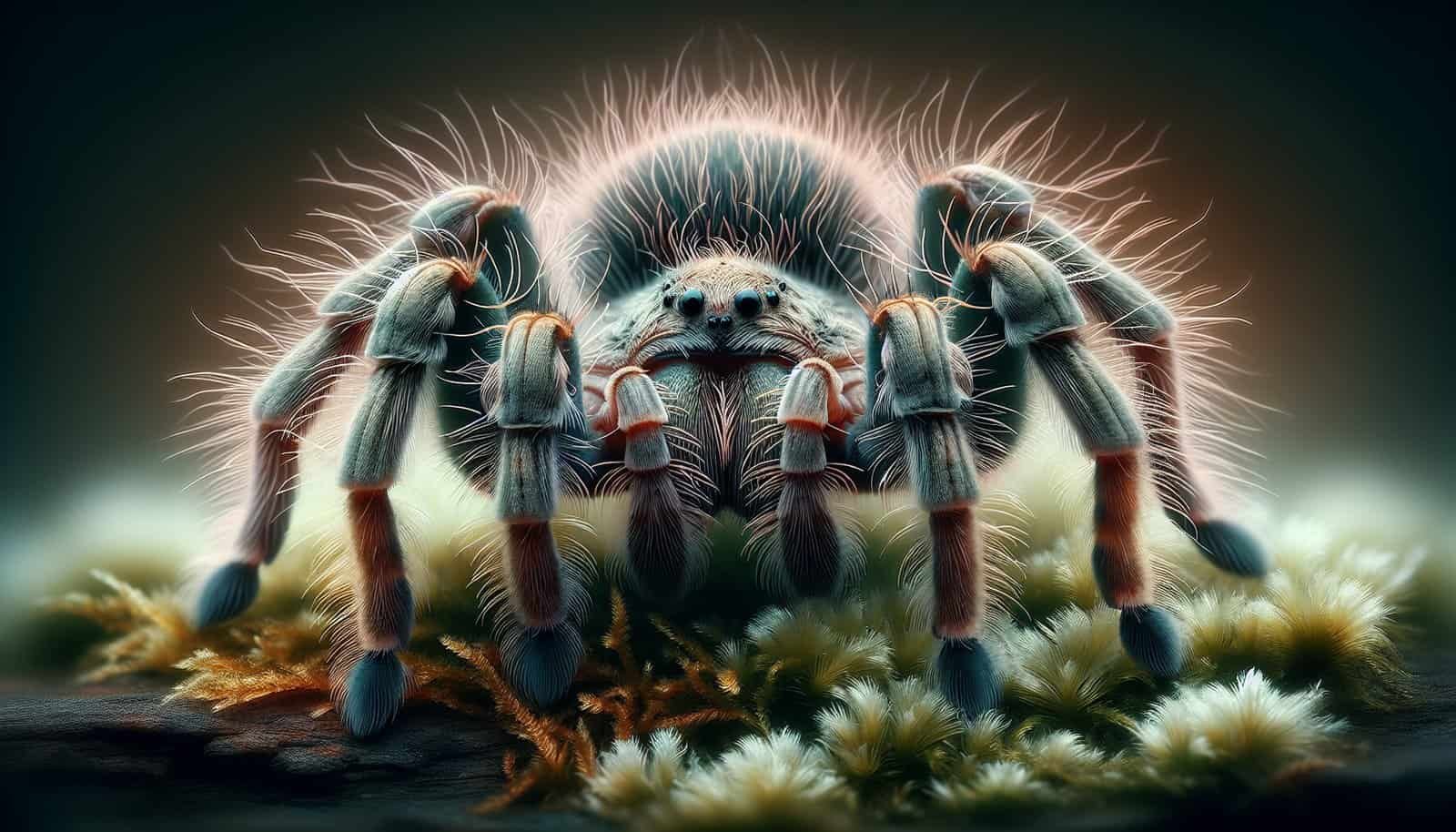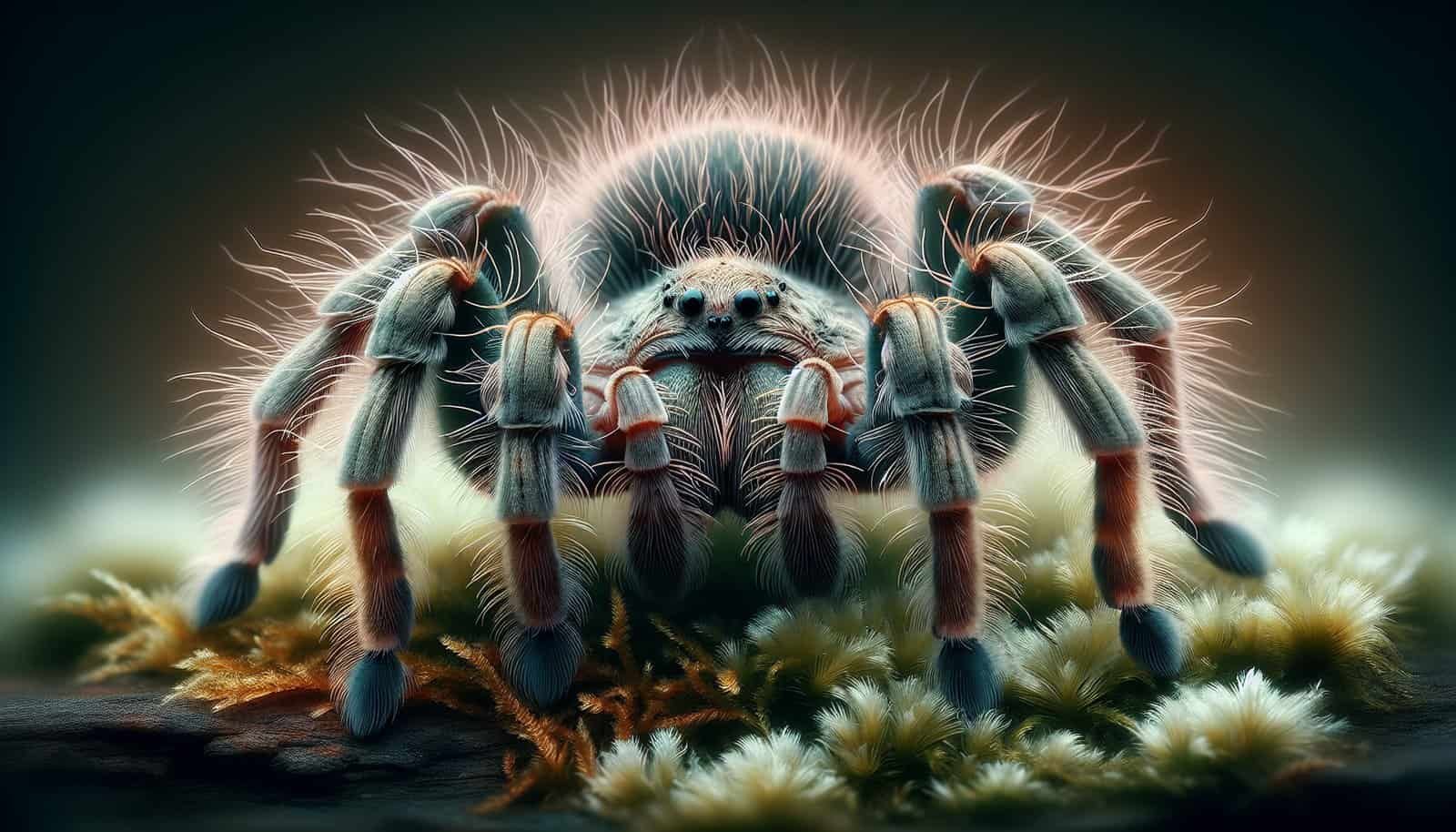So, you’ve recently welcomed a batch of adorable tarantula spiderlings into your home, and now you’re wondering how to properly care for them. Don’t worry, you’re in the right place! In this article, we will explore the essential steps and tips to ensure the healthy growth and well-being of your tiny eight-legged friends. From creating the perfect habitat to feeding and handling, we’ve got you covered on all the necessary care instructions to help your little tarantula spiderlings thrive in their new environment. So, let’s dive right in and learn how to provide the best care for these fascinating creatures!
1. Housing
1.1 Choosing the right enclosure
When it comes to housing your tarantula spiderlings, choosing the right enclosure is crucial for their well-being. It’s essential to provide a secure and properly ventilated enclosure that will prevent any escapes or accidents. A small plastic or glass terrarium with a secure lid is a popular choice for spiderlings. Make sure the enclosure has small ventilation holes to allow for proper air circulation and prevent any moisture buildup.
1.2 Size of the enclosure
The size of the enclosure is another crucial factor to consider when caring for tarantula spiderlings. It’s important to provide an enclosure that is appropriately sized for your spiderlings’ current needs. As a general rule, the enclosure should be approximately three times the leg span of the spiderlings. This will give them enough space to move around comfortably without feeling cramped. Remember to upgrade the enclosure as your spiderlings grow to accommodate their increasing size.
1.3 Substrate for the enclosure
Choosing the right substrate for your tarantula spiderlings’ enclosure is vital for their health and well-being. A popular substrate choice for spiderlings is a mixture of peat moss and vermiculite, as it provides the necessary moisture retention and allows for burrowing behavior. It’s important to provide a substrate layer that is deep enough for the spiderlings to burrow and create secure hiding spots. Additionally, avoid using substrate materials that may contain chemicals or pesticides, as they can be harmful to your spiderlings.
2. Temperature and Humidity
2.1 Optimal temperature range
Maintaining the optimal temperature range is crucial for the health and overall well-being of your tarantula spiderlings. Most tarantula species thrive at temperatures ranging from 75 to 85 degrees Fahrenheit (24 to 29 degrees Celsius). It’s important to ensure that the temperature in the spiderlings’ enclosure remains within this range to promote healthy growth and development. Consider using a reptile heating mat or a low-wattage heat lamp to maintain the appropriate temperature.
2.2 Providing humidity
Humidity plays a significant role in the care of tarantula spiderlings. Many species require higher humidity levels during certain stages of their growth. To provide adequate humidity, you can mist the enclosure with distilled water using a spray bottle. Another option is to create a small humid hide by placing a moistened piece of sphagnum moss in a designated area of the enclosure. Regularly monitor the humidity levels to ensure they stay within the appropriate range for your specific tarantula species.
2.3 Monitoring temperature and humidity levels
To ensure the optimal temperature and humidity levels, it’s crucial to regularly monitor these conditions within the enclosure. Digital thermometers and hygrometers are great tools to accurately measure temperature and humidity levels. Place these instruments in different areas of the enclosure to get an overall idea of the conditions. By monitoring these levels, you can make necessary adjustments to maintain a safe and comfortable environment for your tarantula spiderlings.

3. Feeding
3.1 Appropriate size of prey
Feeding tarantula spiderlings the appropriate size of prey is essential for their proper growth and health. It’s important to offer prey items that are roughly the same size or slightly smaller than the spiderlings’ body. This ensures that they can easily overpower and consume their prey without risking injury. Suitable prey items for spiderlings include pinhead crickets, fruit flies, or small wingless fruit fly larvae.
3.2 Feeding frequency
Tarantula spiderlings have a fast metabolism and require frequent feeding to support their growth. In general, spiderlings should be fed once every two to three days. It’s important not to overfeed them, as this can lead to obesity and other health issues. Observe their feeding response carefully to determine whether they have consumed their prey fully or if there is any uneaten food left in the enclosure.
3.3 Types of prey
While tarantula spiderlings can consume a variety of prey items, it’s important to select prey that is appropriate for their size and species. As spiderlings grow, the size and type of prey they can consume will change. As a general guideline, offer prey items that are soft-bodied and easily digested by the spiderlings. It’s always best to research and consult reputable sources to ensure you are providing suitable prey for your specific tarantula species.
3.4 Handling and feeding techniques
When it comes to handling and feeding tarantula spiderlings, it’s crucial to prioritize their safety and well-being. Spiderlings are delicate and can be easily injured, so handling should be kept to a minimum and done with extreme care. When feeding, it’s best to use long, fine-tipped tweezers or forceps to place the prey item near the spiderling’s burrow or hiding spot. This helps simulate natural hunting behavior and reduces the risk of accidental injury.
4. Water
4.1 Providing a water dish
Providing a small water dish in the tarantula spiderlings’ enclosure is essential for their hydration needs. The water dish should be shallow and easily accessible to the spiderlings. Use distilled or dechlorinated water to fill the dish and ensure that it remains clean and fresh. It’s important to regularly check and refill the water dish as needed.
4.2 Misty environments
Some tarantula species require a slightly higher level of humidity and prefer a misty environment. Misting the enclosure walls or adding moisture to the substrate can help create this environment. However, it’s important to be cautious and avoid over-misting, as excessive moisture can lead to fungal growth or respiratory issues for the spiderlings.
4.3 Hydration needs
Tarantula spiderlings have different hydration needs compared to their adult counterparts. While adult tarantulas can go for extended periods without access to water, spiderlings require more frequent moisture to stay properly hydrated. It’s essential to provide a consistent source of water and monitor the spiderlings’ behavior and appearance to ensure they are adequately hydrated.

5. Lighting
5.1 Natural lighting vs. artificial lighting
When it comes to lighting for tarantula spiderlings, natural lighting can often be sufficient. Placing their enclosure in a well-lit room where they can receive indirect sunlight can provide the necessary light for their growth and development. However, if natural lighting is not readily available or insufficient, you can also use artificial lighting. Choose a low-wattage bulb or LED light that provides a gentle, natural spectrum to avoid disturbing or stressing the spiderlings.
5.2 Importance of light cycles
Maintaining a consistent light cycle is crucial for the overall well-being of tarantula spiderlings. While some tarantula species may not require strict light cycles, others thrive when provided with a predictable day-night schedule. You can achieve this by ensuring they receive adequate periods of light and darkness each day. An ideal light cycle for tarantula spiderlings is 12 hours of light followed by 12 hours of darkness. Consistency in light cycles can help regulate their biological processes and promote healthy growth.
6. Handling and Care
6.1 Safety precautions
When it comes to handling tarantula spiderlings, safety should be a top priority. Tarantulas are delicate creatures, and mishandling can cause injury or stress. It’s essential to wash your hands thoroughly before handling them to remove any scents or chemicals that may harm them. Additionally, ensure that your hands are dry to prevent any slips or accidental dropping of the spiderlings.
6.2 Handling techniques
Handling tarantula spiderlings should be kept to a minimum, and it’s important to approach them with caution. Use a soft paintbrush or a small plastic container to gently guide them if necessary. Avoid touching or prodding them directly, as this can cause them to become defensive or stressed. If you need to move them from one enclosure to another, it’s best to use a catch cup technique, where the spiderling is gently persuaded to walk into a small container.
6.3 Molting process and care
Molting is a natural process for tarantulas, enabling them to grow and shed their old exoskeleton. During this time, it’s crucial to provide a stress-free environment and limit disturbances. Avoid handling or feeding them during the molting process, as any interruptions can be detrimental to their health. Ensure the enclosure remains at the appropriate temperature and humidity levels to support a successful molt. After molting, it’s important to monitor their behavior and offer a prey item appropriate for their size after a few days for proper post-molt recovery.

7. Socialization
7.1 Grouping spiderlings together
While some tarantula species can be housed together as spiderlings, it’s essential to research and understand the specific social behaviors and habitat requirements of your specific tarantula species. Some tarantulas may exhibit cannibalistic tendencies or territorial behavior, making it unsafe to keep them together. However, certain species, such as some Brachypelma and Cyriocosmus, can be housed together if they are similar in size and provided with a spacious enclosure.
7.2 Interaction with humans and other pets
Tarantula spiderlings are not typically considered social pets that require interaction or companionship with humans or other animals. They are best enjoyed through observation and respectful care. Ensure that any interactions with tarantula spiderlings are conducted with caution and respect for their well-being. Keep them in a quiet and low-traffic area to minimize stress and avoid exposing them to loud noises or sudden movements from other pets.
8. Cleaning and Maintenance
8.1 Regular enclosure cleaning
Maintaining cleanliness in the tarantula spiderlings’ enclosure is crucial for their health and well-being. Regular enclosure cleaning helps prevent the buildup of waste, mold, or bacteria. Remove any uneaten prey items, excrement, or molting debris promptly. It’s also important to clean the water dish regularly and replace the substrate periodically to prevent any potential health issues.
8.2 Removing molting debris
After a tarantula spiderling molts, it’s common for them to leave behind molted exoskeleton debris. While it may be tempting to remove these remains immediately, it’s best to leave them in the enclosure unless they pose a threat to the spiderling’s health. The spiderling may consume the exoskeleton for nutritional purposes, and removing it prematurely can disrupt their natural behavior.
8.3 Spot cleaning
In addition to regular enclosure cleaning, spot cleaning is a helpful maintenance task. If you notice any mold, mites, or other signs of contamination in a specific area of the enclosure, remove the affected substrate and replace it with fresh, clean substrate. This targeted cleaning can help prevent the spread of potential health issues and maintain a clean and safe environment for your tarantula spiderlings.

9. Health and Illness
9.1 Common health issues
Tarantula spiderlings, like any living organisms, can encounter health issues. Some common health issues in spiderlings include dehydration, mites or other external parasites, bacterial or fungal infections, and stress-related issues. Regularly monitor their behavior, appetite, and physical appearance to detect any signs of potential health problems.
9.2 Signs of illness or distress
Understanding the signs of illness or distress in tarantula spiderlings is crucial for their well-being. Some common signs include loss of appetite, lethargy, abnormal coloration, excessive webbing, unexplained injury, or difficulty in movement. If you notice any of these signs or any other abnormal behavior, it’s important to take immediate action to assess and address the possible health issues.
9.3 Seeking professional help
If you suspect that your tarantula spiderling is experiencing severe health issues or you are unsure about the appropriate course of action, it’s advisable to seek professional help from a veterinarian or an experienced tarantula keeper. They can provide expert guidance and assistance to ensure the best possible care and treatment for your spiderlings.
10. Growth and Development
10.1 Molting stages
Tarantula spiderlings go through several molting stages as they grow and develop. Each molting stage is known as an instar, and the spiderling sheds its old exoskeleton to reveal a larger one underneath. The time between molts can vary depending on the spiderling’s species and individual growth rate. It’s essential to provide a stress-free environment, optimal temperature, and humidity levels during each molt to support successful growth.
10.2 Measuring growth
Measuring the growth of tarantula spiderlings can be an exciting way to track their development. The most common method of measuring growth is by measuring the leg span. Using a ruler or calipers, gently stretch out one of the spiderling’s legs and measure from the base to the tip. Record these measurements in a growth chart to document their progress over time.
10.3 Providing appropriate space
As tarantula spiderlings grow, they will eventually outgrow their current enclosure and require a larger space. It’s important to monitor their size regularly and upgrade their enclosure accordingly. Providing appropriate space helps prevent any stress or discomfort caused by a cramped environment and allows them to move around freely. Remember to transfer them to a new enclosure carefully to avoid causing unnecessary stress or injury.
Caring for tarantula spiderlings after they hatch requires careful attention to their housing, temperature and humidity, feeding, water, lighting, handling and care, socialization, cleaning and maintenance, health and illness, and growth and development. By following these guidelines and providing a safe and suitable environment, you can ensure the well-being and longevity of your tarantula spiderlings. Remember to always research and consult reputable sources specific to your tarantula species for personalized care instructions.

